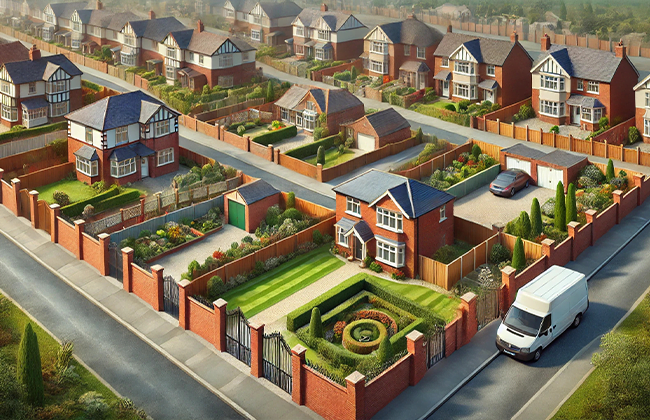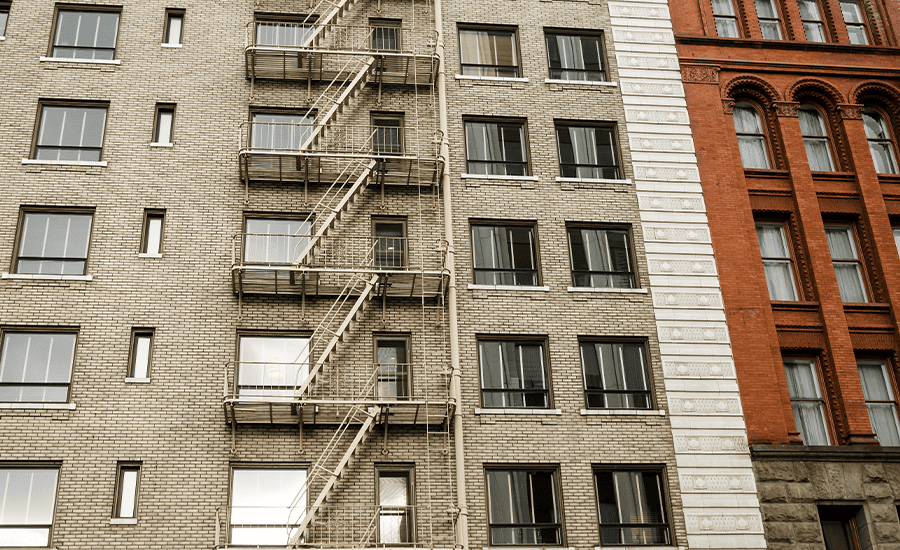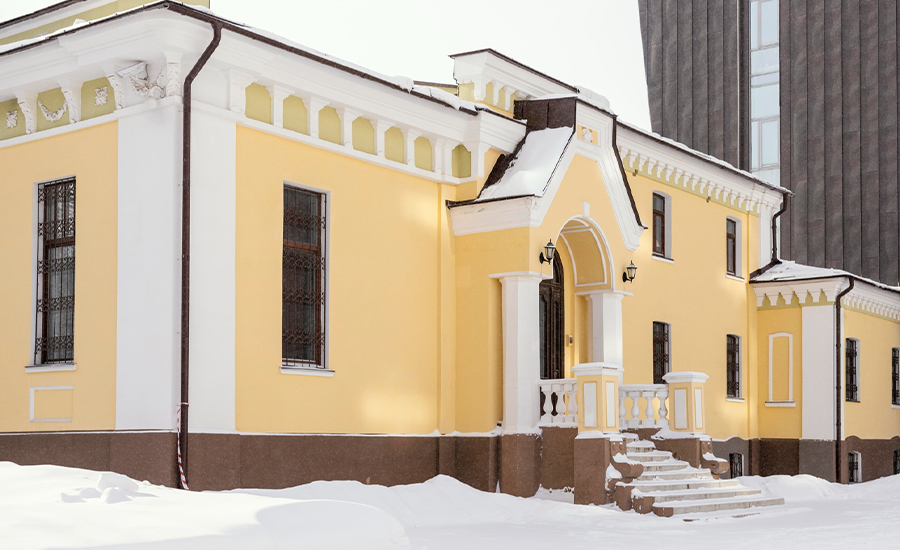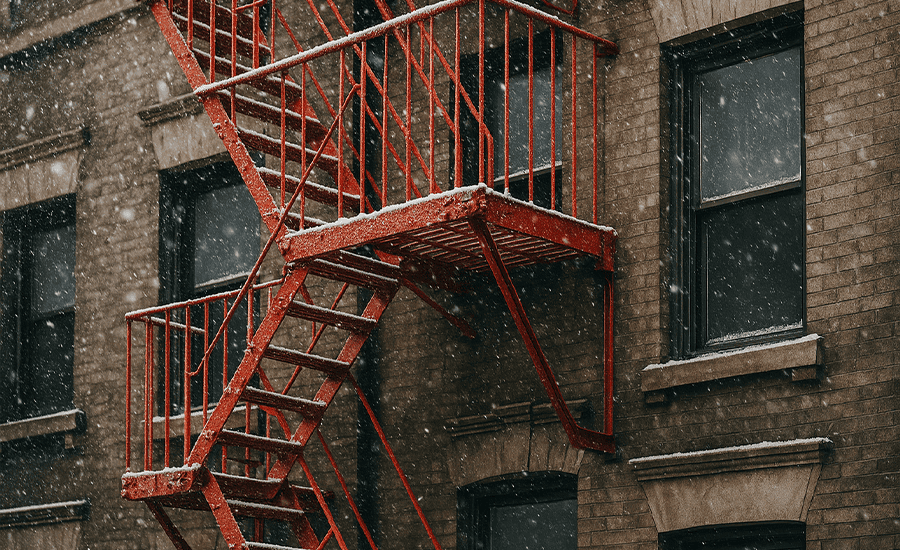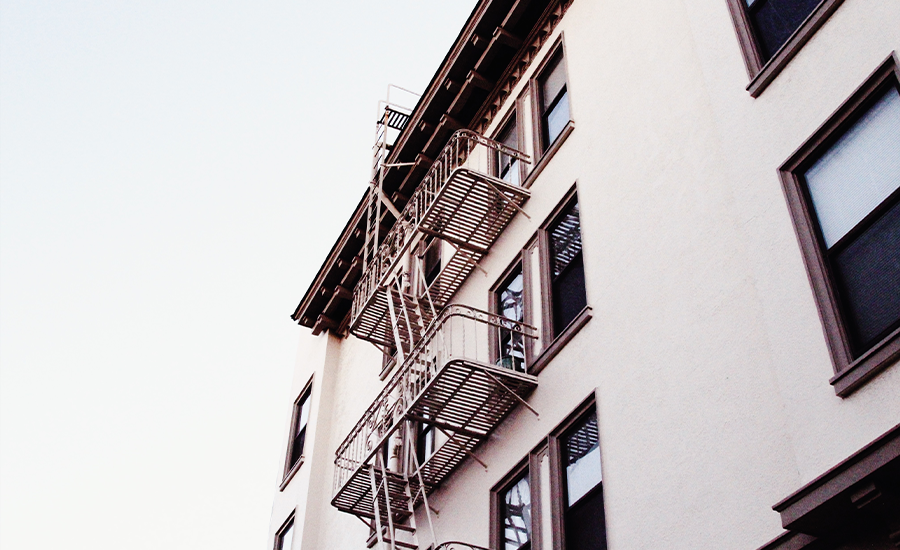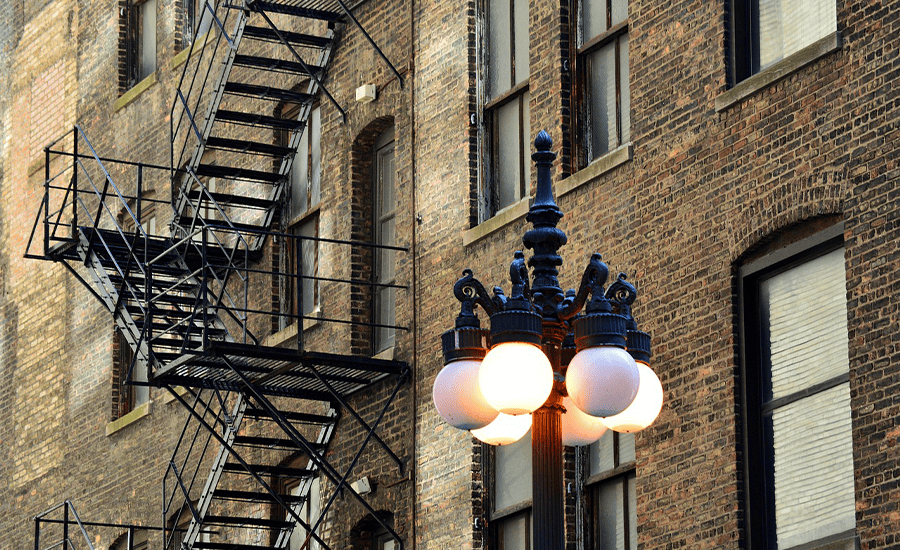When considering building a boundary around your property, understanding the brick fence cost is crucial. It’s not just about aesthetics; it’s about making informed decisions that affect both your budget and the project’s outcome. This guide will delve into what goes into calculating the brick fence cost, ensuring you know what to expect before you start.
What Determines the Cost of a Brick Fence?
When you’re thinking about putting up a brick fence, you might wonder why the costs seem to vary so much. Well, let’s dig into the factors that play a huge role in determining how much you’ll need to shell out. It really comes down to materials, labor, the size and length of the fence, and where you’re located. Each of these factors can significantly influence the final price tag.
1. Materials: Choosing the Right Bricks and Mortar
The choice of materials is the first big decision that affects your cost. Not all bricks are created equal, and the type you choose will impact both the appearance and cost of your fence. Standard bricks are usually more affordable and are great for a basic, sturdy fence. However, if you want something that stands out, you might go for face bricks, which are available in various colors and textures but come with a higher price tag.
Then, there’s mortar. You might think it’s just the stuff that holds bricks together, but its quality can affect the longevity and appearance of your fence. Plus, if you want to add decorative elements like wrought iron inserts or custom caps, these extras will also add to the material costs.
2. Labor: It’s All About the Craftsmanship
Labor costs can really vary, depending on the complexity of your fence design. If it’s a straight line with no fancy stuff, it’ll cost less to build. But if you’re looking for intricate patterns or custom designs, the price will go up. The craftsmanship required not only adds to the beauty and uniqueness of your fence but also to the overall cost. Remember, skilled labor isn’t cheap, but it’s worth every penny for the quality you get.
3. Size and Length: More Than Just Measurements
The size and length of the fence directly determine how much materials you’ll need and how long it will take to install. A larger, taller fence will use more bricks, which increases material costs and the labor required to build it. Don’t forget, more fence also means more mortar and possibly more decorative elements, all of which add up.
4. Location: It’s Not Just Where, But Also How Much
Lastly, where you live can have a big impact on the cost. Material costs and labor rates differ from one region to another. For instance, if you’re in an urban area, both materials and labor might be more expensive compared to a rural setting. Plus, transportation costs for getting the bricks and other materials to your site can also vary depending on your location.
So, when you’re planning your budget for a brick fence, remember to consider these factors. They’ll help you understand the quotes you get from contractors and ensure you’re making informed decisions about this significant addition to your property.

Material Costs: Choosing Your Bricks
Selecting the right bricks is crucial when you’re planning to build a brick fence, not just for the structure’s durability but also for its overall aesthetics and, of course, the cost. Bricks are not just bricks; they come in various types, each with its own set of benefits and price points. Let’s break down the types of bricks you might consider for your fence and how they can impact your budget.
1. Standard Bricks: The Budget-Friendly Choice
Standard bricks are the go-to choice for many homeowners because they strike a good balance between durability and cost-effectiveness. Typically made from clay or concrete, these bricks are ideal for a straightforward, functional fence that does the job of marking boundaries and providing security without breaking the bank. They’re readily available and come in standard sizes and colors, which helps keep their prices lower.
2. Face Bricks: Elevate Your Fence’s Look
If you’re aiming for something that looks a bit more polished and eye-catching, face bricks might be up your alley. These bricks are known for their aesthetic appeal and come in a variety of textures, colors, and finishes. Face bricks are made to be seen and are often used on the visible parts of a structure to enhance its appearance. Because of their enhanced quality and looks, they tend to be more expensive than standard bricks. They’re perfect for front yard fences or any part of your property where you want to make a good impression.
3. Recycled or Antique Bricks: For a Touch of Character
For those who love a bit of history or uniqueness, recycled or antique bricks are a fantastic choice. These bricks come from demolished structures and are reused in new building projects. Opting for recycled bricks is not only a green choice but also adds a unique, rustic charm to your fence. However, their rarity and the process of reclaiming them often make them pricier than new bricks. They are perfect for creating a standout feature in your garden or around your home.
Cost Comparison Table
To give you a clearer idea of how these options stack up against each other in terms of cost, here’s a quick overview:
| Brick Type | Average Cost per 1,000 Bricks |
| Standard Bricks | $400 – $600 |
| Face Bricks | $600 – $800 |
| Recycled Bricks | $800 – $1,000 |
Choosing the right type of brick for your fence involves balancing your budget with the desired look and longevity of the fence. Standard bricks offer affordability, face bricks provide enhanced aesthetics, and recycled bricks bring uniqueness and eco-friendliness to your project. Whichever you choose, make sure it aligns with both your functional needs and aesthetic preferences.
Labor Costs: Installation Insights
When it comes to building a brick fence, the labor involved can vary just as much as the materials used. How much you’ll end up paying for labor largely depends on the design complexity of your fence. Let’s explore what this means for your project, whether you’re eyeing a simple boundary marker or a fancy statement piece.
1. Simple Designs: Cost-Effective and Straightforward
If you’re leaning towards a simpler, more understated design for your brick fence, you’re looking at lower labor costs. Why? Well, simple designs are generally faster to build and don’t require highly specialized skills. A basic straight wall with minimal ornamental features will take less time and fewer man-hours, which translates to savings on labor costs. This option is great if you’re on a tighter budget but still want the durability and privacy that a brick fence offers.
2. Complex Designs: For Those Who Want a Bit More Flair
Now, if you want your brick fence to stand out from the crowd or to have specific design elements that match the style of your home, expect to pay more for labor. Complex designs include features like intricate brick patterns, custom curves, or integration with other materials like wrought iron. These features require more precision and expertise from the builders, which means more time and labor costs. The end result, however, can significantly boost the curb appeal and value of your property.
Factors Influencing Labor Costs
- Skill Level Required: More complex designs need skilled masons who often command higher rates.
- Time: The more complex your design, the longer it will take to complete, increasing the total hours of labor needed.
- Tools and Equipment: Certain designs may require specialized tools for cutting and laying bricks, which can also add to the cost.
Why Opt for Professional Installation?
While it might be tempting to try and save money by going the DIY route, installing a brick fence is a labor-intensive job that requires a good deal of expertise to ensure it’s done right. Professional masons bring years of experience and can handle both simple and complex designs efficiently, ensuring your fence is sturdy, level, and looks great. Plus, they can foresee and tackle any challenges that might arise during construction, such as dealing with uneven ground or integrating with existing structures.
Choosing the right labor approach for your brick fence involves weighing the complexity of the design against your budget and desired timeline. While simple designs can save you money on labor costs, investing in a complex, professionally-installed fence can offer greater satisfaction and curb appeal, making it a worthwhile investment in the long run.
Design and Additional Features
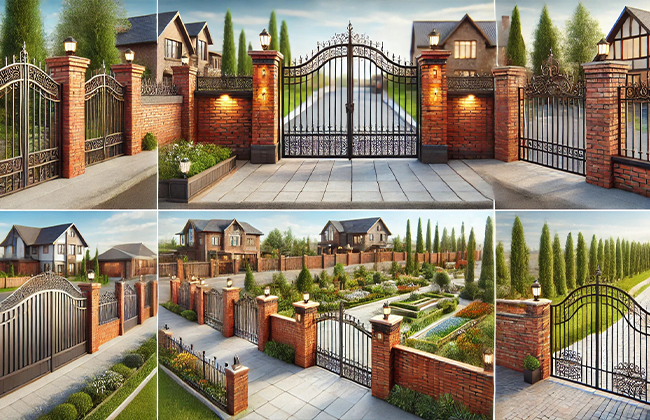
Adding design elements to your brick fence not only boosts its aesthetics but also influences the overall cost. Let’s delve into what kind of design features you can add and how they play a role in the costing.
1. Gates: Combining Functionality with Style
Integrating a gate into your brick fence is a popular choice for both security and aesthetic purposes. You can choose from metal or wooden gates, each bringing its own style and price point to the project.
- Metal Gates: These are durable and offer a high level of security. You can go for simple designs or opt for custom ornamental patterns that complement the style of your brick fence. Metal gates require specific hardware and fittings for installation, which can add to the cost.
- Wooden Gates: For a more traditional or rustic look, wooden gates are a fantastic option. They blend well with natural surroundings and can be customized with various stains and finishes. However, keep in mind that wood might require more maintenance than metal.
2. Decorative Elements: Personalize Your Perimeter
Decorative elements on a brick fence can range from custom brick carvings to unique mortar applications, enhancing the fence’s visual appeal and uniqueness. These customizations require skilled craftsmanship and special materials, which reflect in the cost.
- Custom Brick Designs: Whether it’s a specific pattern, family crest, or a unique geometric arrangement, custom designs on bricks are an excellent way to add a personal touch to your fence. Special molds or cutting techniques might be needed, adding to the expense.
- Special Mortar Use: The type of mortar used can also serve as a decorative element. Colored or textured mortar can dramatically change the look of your fence, making it stand out or blend in with your home’s overall design theme.
Cost Considerations
When planning for these additional features, consider the following:
- Materials Cost: Specialty gates and custom bricks can significantly increase the materials expense.
- Labor Cost: Skilled labor is necessary for installing complex gate systems and crafting custom designs on bricks. This specialized work usually costs more than standard fence construction.
- Maintenance Costs: Decorative elements might require specific upkeep, especially wooden gates and custom brickwork, to maintain their appearance over time.
Why Invest in Design and Features?
Incorporating these design elements does more than just beautify your property; it can also enhance the property’s value and make it stand out in the neighborhood. While the initial costs might be higher, the long-term benefits of having a uniquely beautiful and secure boundary can outweigh these expenses.

Length and Height: Calculating Your Needs
When planning for a brick fence, one of the first things to figure out is how much material you’ll need and how the fence’s dimensions—its length and height—will affect the overall cost. Understanding these aspects will help you budget more effectively and avoid surprises during the construction process.
1. Determining the Fence Dimensions
The total length and height of your fence are crucial in determining how many bricks you’ll need. Obviously, a longer or taller fence will require more materials, which means higher costs for both bricks and labor.
- Length: This is the total distance your fence will cover. Whether it’s enclosing the back yard, spanning the entire property, or just sectioning off a specific area, you’ll need to measure this accurately.
- Height: This is how tall your fence will be. Taller fences offer more privacy and security but will use more materials and take longer to build.
2. Example Calculation: A Standard Project
Let’s do a bit of math to see how this works in a real-world scenario. Suppose you want to build a 50-foot long, 4-foot high brick fence:
- Bricks Needed: For a fence of this size, you’ll approximately need about 5,000 bricks. This estimate can vary based on the exact size and type of bricks you choose.
- Labor Costs: Labor costs can differ widely based on where you live and the complexity of the work. On average, you might expect to pay between $30 and $50 per hour. The total cost will depend on how quickly the workers can lay the bricks, which is influenced by the fence’s design and working conditions.
3. Calculating Material Needs
To calculate the total number of bricks required, you’ll use the area you want to cover (length x height) and then adjust based on the size of the brick. Here’s a simple formula:
- Area in Square Feet: Length (in feet) x Height (in feet) = Total square feet
- Bricks per Square Foot: This can vary, but let’s say 10 bricks per square foot as a rough guideline.
For our example:
- Total Area: 50 feet x 4 feet = 200 square feet
- Total Bricks: 200 square feet x 10 bricks per square foot = 2,000 bricks (This is a simplified example; always check the actual coverage with your supplier.)
4. Budgeting for Your Project
Once you have these figures, you can start to put together a budget. Remember to factor in extra for waste, delivery fees, and any unforeseen expenses that might pop up during construction.
Regional Cost Variations
When planning a brick fence, it’s crucial to consider how costs can differ based on your location in the USA. This isn’t just about the travel expenses for materials or the commute for workers; it’s also about the regional variations in the cost of materials and labor rates.
Why Do Costs Vary?
- Material Costs: The price of bricks and other construction materials can vary depending on local availability. For instance, areas closer to brick manufacturers may have lower prices due to reduced transportation costs.
- Labor Charges: Labor costs can be higher in urban areas compared to rural areas. This is influenced by the local cost of living and the availability of skilled labor.
How to Navigate Regional Cost Differences
- Get Multiple Quotes: Always get quotes from several contractors to ensure you’re getting a fair price. This also gives you a better idea of the local market rates.
- Consider Local Suppliers: Using local materials can sometimes help reduce costs. Local suppliers may offer competitive prices that outsiders can’t match.
Maintenance and Upkeep
Maintaining your brick fence is essential not only to keep it looking great but also to ensure it stands the test of time. Regular maintenance helps preserve the fence’s aesthetic appeal and structural integrity.
Routine Maintenance Tasks
- Cleaning: Bricks can accumulate dirt, moss, and other debris, especially in damp climates. Regular cleaning will keep your fence looking fresh and prevent decay.
- Inspections: Periodic inspections can help catch issues like loose or cracked bricks early before they become major problems.
- Repointing: The mortar between bricks can deteriorate over time. Repointing, which involves replacing the old mortar, is crucial to maintaining the structural integrity of the fence.
Planning for Long-Term Upkeep
- Budget for Repairs: Set aside a budget for potential repairs. This proactive approach can help you manage costs more effectively when they arise.
- Professional Maintenance: Consider hiring professionals for regular maintenance. They can provide expert care and advice, ensuring your fence always looks its best.
Maintaining a brick fence might seem like a chore, but regular upkeep ensures it continues to add value and charm to your property for years to come. Plus, it helps avoid more costly repairs down the road. So, while you might pay a bit upfront for maintenance, it’s an investment that keeps your property looking great and functioning well.

Permitting and Regulations
When you’re planning to build a brick fence, it’s not just about choosing the right materials or design; you also need to consider the local permitting and regulatory requirements. These rules can significantly influence both the timeline and the overall cost of your project.
Understanding Local Building Codes
Local building codes are established to ensure that all construction work meets safety standards. For a brick fence, these codes can dictate everything from the height of the fence to the materials used and the method of construction.
- Height Restrictions: Many areas have restrictions on how tall a fence can be. If your planned fence exceeds these limits, you may need to apply for a variance.
- Material Specifications: Some codes may restrict the types of materials you can use, especially in historic districts or certain residential areas.
Navigating Permit Requirements
Before you start building, you’ll likely need to obtain a permit from your local building department. This process involves:
- Submitting Plans: You might need to provide detailed plans of your fence design for approval. This could require the services of a professional, adding to your costs.
- Inspection Requirements: After your fence is built, an inspection might be necessary to ensure it complies with local codes and the approved plans.
How Permitting Affects Your Timeline and Budget
- Timeline Delays: Waiting for permit approvals can delay your project. It’s wise to factor this into your project timeline.
- Cost Implications: Permit fees vary by location and the complexity of your project. There may also be costs associated with modifying plans to meet specific code requirements.
Tips for a Smooth Permitting Process
- Research Early: Find out what permits you’ll need well in advance. Visit your local building department’s website or give them a call.
- Professional Help: Consider hiring a professional who understands local laws to help with your permit applications and design plans.
Navigating the permitting process can be a bit of a hassle, but it’s a crucial step to ensure that your brick fence project goes smoothly and adheres to all local regulations. Being proactive about understanding and complying with these requirements will help you avoid costly mistakes and delays, ensuring that your fence is built legally and safely.
DIY vs. Professional Installation
When it comes to building a brick fence, you might be tempted to tackle the project yourself to save on costs. However, it’s important to weigh the pros and cons of a DIY approach versus hiring professionals. Each option has its own benefits and challenges, especially in terms of cost, durability, and compliance with local codes.
DIY Installation: Pros and Cons
Pros:
- Cost Savings: The most apparent advantage of going DIY is the potential savings on labor costs. If you’re handy and have the necessary tools, you can significantly reduce the overall expense of building a brick fence.
- Flexibility: Working on your own timeline and making adjustments as you go can be more flexible than coordinating with a contractor.
Cons:
- Skill Level: Bricklaying is a skilled trade that requires practice and precision. A poorly constructed brick fence can be unstable, uneven, and less durable.
- Time Investment: DIY projects often take longer than expected, especially if you’re learning as you go. This can extend the time your property is in disarray and potentially inconvenience you over a prolonged period.
- Compliance Issues: Ensuring that your DIY fence meets all local building codes and permit requirements can be challenging. Mistakes here can lead to fines or even having to rebuild the fence.
Professional Installation: Why It Might Be Worth It
Pros:
- Expertise and Experience: Professionals bring years of experience. They know how to handle different materials and designs and can foresee and solve problems that might stump the average DIYer.
- Durability and Quality: A professionally installed fence is likely to last longer and have fewer issues over time because it will be built correctly and to code.
- Compliance with Local Codes: Professionals are familiar with local building codes and can ensure that your fence meets all legal requirements, avoiding potential legal troubles.
Cons:
- Higher Initial Cost: The main drawback of hiring professionals is the higher upfront cost. However, this needs to be balanced against the long-term benefits of having a well-built fence.
Making the Right Choice
Choosing between DIY and professional installation comes down to assessing your skills, understanding the scope of the project, and considering how much time and money you’re willing to invest. For many, the peace of mind that comes with professional installation is worth the extra cost, especially for complex projects or when compliance with strict building codes is a concern.
Conclusion:
Grasping the brick fence cost is essential for anyone looking to enhance their property’s perimeter with durability and style. If you’ve weighed your options and are seeking a professional contractor for your brick fence, feel free to reach out at (+1) 917-355-8556 for expert guidance and service. Whether it’s choosing the right materials or navigating local building codes, a professional can help streamline the process and ensure quality results.
FAQs:
Q: What affects the brick fence cost the most?
A: The main factors impacting brick fence cost include the materials used, the fence’s size and height, and the complexity of the design. Labor costs also play a significant role, especially for intricate designs.
Q: How can I reduce my brick fence cost?
A: To lower your brick fence cost, choose simpler designs and more cost-effective materials. Additionally, sourcing materials locally can reduce shipping expenses.
Q: Is a permit required for building a brick fence, and how does it affect the cost?
A: Yes, a permit is often required for building a brick fence, which can influence the brick fence cost. Check local regulations as fees vary by region and may impact your overall budget.
Q: How does the choice of bricks influence the brick fence cost?
A: The type of bricks selected can significantly alter the brick fence cost. Standard bricks are usually more affordable, while premium or custom options like face bricks or antique bricks will increase costs.
Q: What should I consider when estimating the brick fence cost for a large property?
A: For larger properties, the brick fence cost will increase due to more materials and labor being required. Planning for detailed measurements and potential complexities in design can help in achieving a more accurate estimate.


